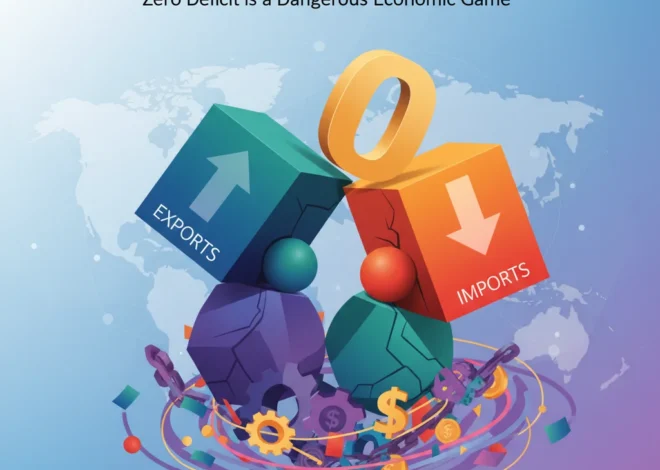
The Setting Sun? Decoding Japan’s Economic Contraction and Its Global Ripple Effect
For decades, Japan has stood as a pillar of the global economy—a powerhouse of innovation, manufacturing, and financial stability. As the world’s third-largest economy, its economic health sends ripples across international markets. Recently, however, that pillar has shown signs of strain. Preliminary data reveals a concerning contraction, a development that has sent economists, investors, and policymakers scrambling to understand the causes and, more importantly, the consequences. This downturn isn’t just a domestic issue; it’s a complex story of global trade tensions, domestic fragility, and a government poised to unleash another massive wave of fiscal stimulus.
The latest figures paint a stark picture: Japan’s economy is shrinking, weighed down by sluggish exports and weakening domestic consumption. This economic malaise is providing significant political leverage for Prime Minister Sanae Takaichi’s administration, which is advocating for a robust stimulus package to shield struggling households and businesses from the downturn (source). But is another injection of government spending the right medicine for an economy facing deep-seated structural challenges? In this analysis, we will dissect the forces behind Japan’s economic slump, evaluate the proposed government response, and explore the critical implications for global finance, the stock market, and international investing strategies.
A Deep Dive into the Data: Unpacking the Contraction
To truly grasp the situation, we must look beyond the headline number. An economic contraction, measured by a negative change in Gross Domestic Product (GDP), signifies that a country’s output of goods and services is decreasing. According to recent figures from Japan’s Cabinet Office, the economy shrank at an annualized rate of 1.2% in the last quarter. This reversal from previous growth highlights vulnerabilities that have been lurking beneath the surface.
The weakness was broad-based, affecting the core pillars of the Japanese economy. Below is a breakdown of the key components contributing to the GDP decline.
| GDP Component | Quarterly Change | Primary Driver of Change |
|---|---|---|
| Private Consumption | -0.5% | Rising inflation eroding household purchasing power; stagnant wage growth. |
| Business Investment (Capex) | -0.7% | Global economic uncertainty and rising material costs discouraging new investment. |
| Net Exports (Exports – Imports) | -0.9% | Slowing demand from key trading partners like China; impact of global trade friction. |
| Government Spending | +0.2% | Continued public investment projects providing a minor offset to the decline. |
As the table illustrates, the downturn is not due to a single factor but a confluence of headwinds. Private consumption, which accounts for over half of Japan’s GDP, has faltered as inflation outpaces wage growth, forcing households to cut back. More alarmingly, the engine of Japan’s post-war economic miracle—its export sector—is sputtering. This is where the international dimension of the story becomes critical, particularly the long shadow cast by ongoing US trade policies.
The Trillion-Dollar Typo: Why a Small Media Correction Reveals a Huge Risk in Modern Investing
The Global Squeeze: How US Tariffs and Trade Wars Hit Home
While the US tariffs referenced in initial reports may not target Japan directly, their indirect effects are profound. The ongoing economic friction between the United States and China has created a significant slowdown in the Chinese economy, which is a critical market for Japanese goods. Japan’s world-class manufacturers do not just sell finished products like cars; they are a vital part of the global supply chain, exporting high-tech components, industrial robots, and semiconductor manufacturing equipment to factories across Asia, especially in China.
When Chinese manufacturing slows due to tariffs and economic uncertainty, the demand for these Japanese components plummets. A report from the Brookings Institution highlights that the trade war has morphed into a “tech war,” disrupting the intricate electronics and technology supply chains where Japanese firms are key players. This disruption directly impacts the bottom line of major players on the Japanese stock market, from Toyota and Sony to specialized firms like Keyence and Murata Manufacturing. This external pressure complicates any domestic recovery effort, as Japan’s economic fate is inextricably linked to the health of global trading.
The Government’s Playbook: More Stimulus on the Horizon?
Faced with a shrinking economy and discontented public, Prime Minister Takaichi’s administration is signaling a turn to a well-worn tool: fiscal stimulus. The argument is straightforward: with private demand faltering, the government must step in to fill the gap, support households, and prevent the economy from sliding into a full-blown recession. This strategy is politically popular and provides a visible sign of government action.
Potential measures could include:
- Direct cash handouts to households, particularly those with lower incomes.
- Subsidies to offset high energy and food costs.
- Increased public works spending on infrastructure projects.
- Incentives for businesses to raise wages and increase domestic investment.
However, this approach is not without significant risks. Japan’s government debt is already the highest in the developed world, standing at over 260% of its GDP (source: IMF). While the Bank of Japan’s ultra-low interest rate policy has made this debt manageable, each new stimulus package adds to the colossal pile. Critics argue that these measures offer diminishing returns and fail to address the root causes of economic stagnation, such as rigid labor markets and an aging, shrinking population. The field of economics is fiercely debating whether this level of debt is sustainable or a ticking time bomb for the country’s long-term financial health.
Beyond the Bonus: Why ANZ's Million Pay Cut Signals a New Era for Banking Accountability
Implications for Investors and Global Markets
For finance professionals and investors, Japan’s economic crossroads presents a complex mix of risks and opportunities. Understanding the moving parts is key to navigating this environment.
The Stock Market (Nikkei 225)
The Japanese stock market will likely see a divergence in performance.
- Exporters: Companies with heavy reliance on exports to China and the US may face continued headwinds. Investors will be closely watching their quarterly earnings for signs of a sustained slowdown.
- Domestic-Focused Firms: Companies in sectors like retail, services, and real estate could benefit from a large-scale government stimulus package that boosts domestic consumption.
- Banking & Finance: The banking sector remains under pressure from the ultra-low interest rate environment. Any change in the Bank of Japan’s policy would have a massive impact here.
The Japanese Yen (JPY)
The Yen has traditionally been a “safe-haven” currency, strengthening during times of global uncertainty. However, Japan’s own economic weakness and the widening interest rate gap with countries like the United States have put downward pressure on the currency. A weak Yen is a double-edged sword: it makes Japanese exports cheaper and more competitive, but it also increases the cost of importing essential goods like energy and food, fueling inflation.
Investing and Financial Technology
For the global investor, this situation warrants a nuanced approach. The rise of modern financial technology and fintech platforms has made accessing the Japanese market easier than ever. Some may see the dip as a buying opportunity in world-class companies at a discount. Others may hedge their bets, wary of the long-term structural and demographic challenges. The deployment of new technologies like blockchain in trade finance could one day help insulate supply chains from friction, but for now, the traditional economic forces of supply and demand dominate the trading landscape.
Conclusion: A Crossroads for Japan and the World
Japan’s economic contraction is more than a statistic; it’s a symptom of a global economy under stress and a nation grappling with its own long-term destiny. The immediate cause may be a slump in exports tied to US tariffs and a global slowdown, but the context is decades of fighting deflation and demographic decline. Prime Minister Takaichi’s proposed stimulus may provide a temporary cushion, but it will not solve the underlying issues.
For business leaders, investors, and finance professionals, the path forward requires careful observation. Will the stimulus be enough to spark a genuine recovery? Can Japan’s innovative companies pivot to new sources of growth? And will the government finally tackle the structural reforms needed to secure its future? The answers to these questions will not only determine the trajectory of the world’s third-largest economy but will also have profound implications for the global stock market, international trading relationships, and the very fabric of our interconnected financial world.


